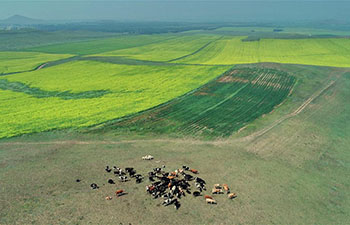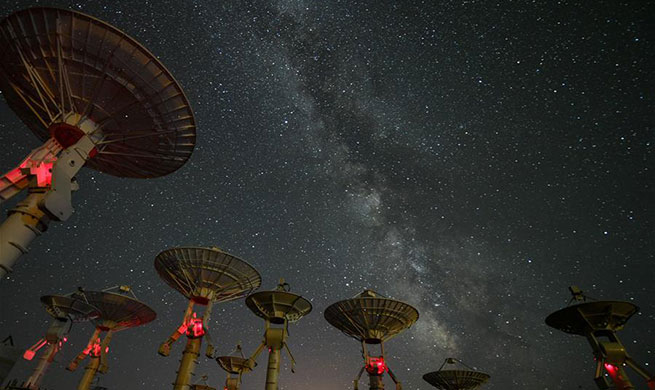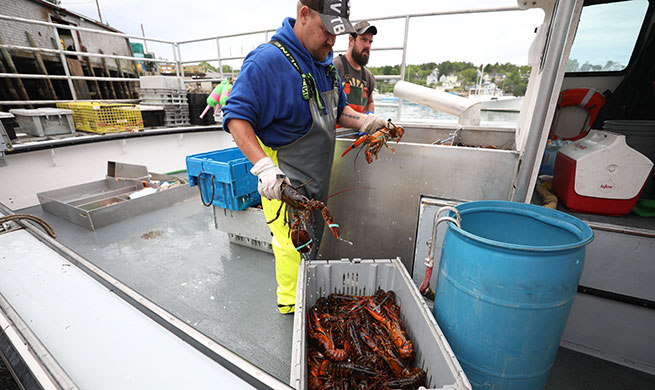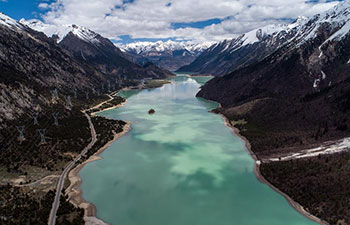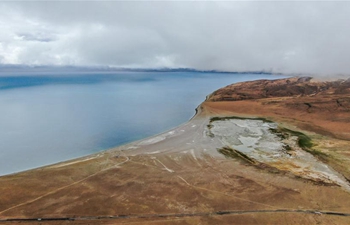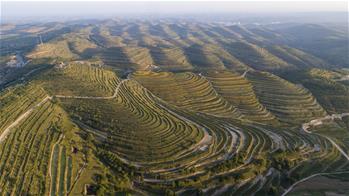by Peter Mertz
CHEYENNE, the United States, July 29 (Xinhua) -- Far off the beaten path in a remote part of western Wyoming sits a large, state-of-the-art facility housing one of the fastest computers in the United States.
The National Center for Atmospheric Research (NCAR)'s supercomputer facility opened in 2012, and each year, an increasing number of visitors journey into rural America to learn about supercomputers.
"Word must be getting out it's a pretty cool place to go," said Aaron Andersen, NCAR director of enterprise systems and services, referring to the 15,000 people who visited the NCAR-Wyoming Supercomputer Center (NWSC) in 2018.
Only five miles (8.05 km) from the Wyoming state capital, NWSC is surrounded by pastures and rolling hills, which is no surprise considering the Cowboy State is the least populous in the United States.
The NWSC facility is a diamond in the rough -- boasting the 40th fastest computer in the world -- that has 160 annual users, mostly weather scientists, as well as several college and university clients.
NWSC officials hope that by 2022, the National Science Foundation (NSF) will allow them to launch a supercomputer three times faster than "Cheyenne," which started operation in 2017 and has a peak calculating speed of 5.4 quadrillion operations, or petaflops, per second.
"It will be smaller than 'Cheyenne' but can process up to 15 petaflops," Andersen said during an exclusive tour of his facility with Xinhua, showing two rows of shiny, black computer cabinets of "Cheyenne" about 30-feet long and 6-feet wide.
The next supercomputer's exact location has yet to be determined, Andersen said, noting that access to power is his primary consideration.
Andersen, a graduate in computer science and software engineering at the University of Colorado, will spearhead the installation again after designing the water-saving cooling technology for the center's first supercomputer "Yellowstone."
He said that the name of the new Wyoming supercomputer has yet to be decided, and NWSC scientists will submit a request for proposal soon.
When the NWSC facility opened in 2012, it featured recycled materials and renewable energy, and was soon awarded a gold certification by the U.S. Green Building Council for its cutting-edge sustainable design and construction.
As weather has become more aberrant in the United States in recent years, NSF and other governmental agencies have called the collection and analysis of weather data a national priority.
The freak storms in March and April this year caused freezing temperatures and heavy snowfall, and swept from Colorado eastward into the Great Plains.
The Wyoming supercomputer is only one of the three in the country dedicated exclusively to climate observation and analysis.
Each day, weather scientists run complex algorithms to study weather patterns, which has become more important as recent radical weather has caused great damage from coast to coast.
"We have two meteorologists on staff, and when the two 'Bomb Cyclones' hit Colorado earlier this year, they got excited to see what the data would reveal," Andersen said.
The Wyoming facility employs only 22 people, but in Boulder, 100 miles (160.93 km) away, some 1,000 scientists, include visiting scholars from China, are feeding data to the supercomputer.
"Part of our mission statement is the sharing of scientific data," he said.


